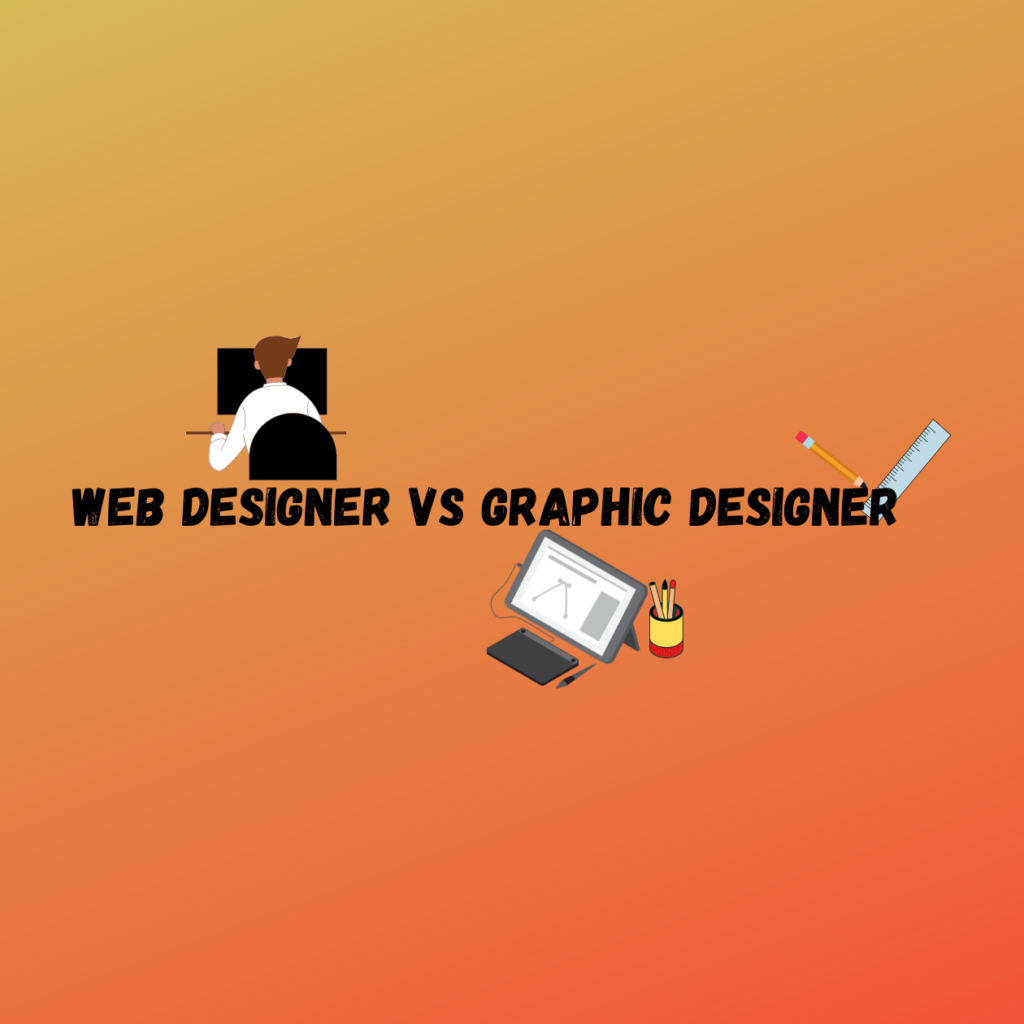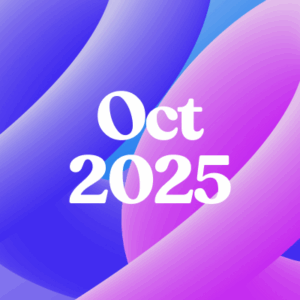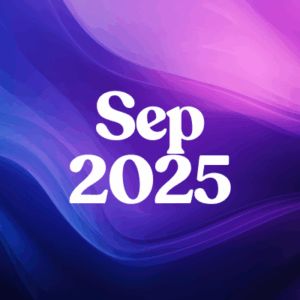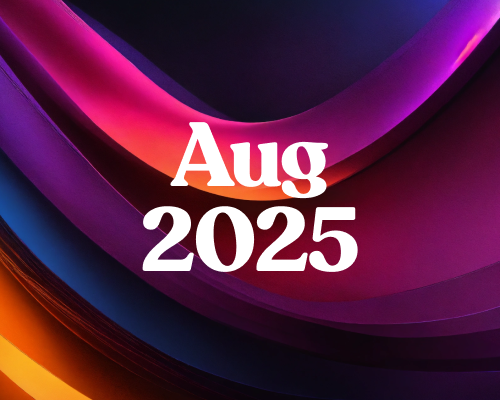On the Venn diagram of creativity, web and graphic design share a few similarities. Both require a good understanding of typography, graphics, and the principles of design. But in the end, web and graphic design are different pursuits with different areas of expertise.
Web Designer vs Graphic Designer
1. Web design is a dynamic medium
Print is a physical medium where the user experience tends to be linear.
Comparing web design and graphic design is like comparing an iPad to a painting. Both display beautiful visuals, but one is interactive and the other will get you a security escort to the door if you touch it.
Graphic design has its origins in print. Whether it’s a magazine layout or a children’s book, printed materials tend to be less interactive than their digital counterparts. But they still depend on an artistic assembly of images, text, and other graphics to tell a story or communicate a message. There needs to be flow and logic to navigating printed material.
Web design shares these same roots as a largely visual design discipline, but the focus on the web is how artistry can create experiences people can interact with — participate in — rather than simply consume. A web designer may work with a graphic designer for visual elements like illustrations and iconography, but a web designer will then fit all these pieces together to create a complete interactive design — something usable.
And a website will have different paths users can take — web designers need to make sure users have a good experience and can achieve their goals. They understand how navigational elements, call-to-action buttons, and other interactive elements guide, influence, and enhance a user’s journey.
There’s a word for this set of concerns in website design — it’s what UI design is all about. In a sense, graphic designers, like web designers, are concerned with UX, user experience. But they’re largely exempt from worrying about UI, how the user interacts with their work. Even the term for audience in each discipline suggests this difference — graphic design professionals usually have “viewers” in mind rather than “users.” Web design professionals are typically UI designers and UX designers in a unified role — how often have you seen “UI UX designer” listed on a resume?
Graphic designers have much of the same skill sets as web designers. They both know typography, color palettes, and the rules of composition and layouts. But good web designers pay attention to how these elements affect online interactivity and usability.
2. Web designers are concerned with load times and file sizes
Pixar landing page featuring a closeup of Miguel and Dante from the movie Coco.
Pixar could have filled their landing page with award-winning animation, but they keep it minimal for a quick load time.
It’s not the boogeyman that keeps web designers awake at night — monstrous file sizes are what haunt them.
Web designers are about ideas and aesthetics, but they’re also all about optimization. The images, motion graphics, animations, and other graphic elements should look good and be small enough to load quickly on all devices. Long load times result in a bad user experience and high bounce rates.
The only time graphic designers might care about file size is when they’re trying to to fit that huge promotional banner into the back of their compact car.
3. Web designers have typography hurdles to jump
Graphic designers can use pretty much any font without worrying too much about how it’ll display in the final deliverable — as long as the printer’s worth the name. Web designers, however, need to consider how text will display on different screens and in different browsers.
Luckily, the addition of the @font-face rule in CSS allows for a wider array of font choices. And applications like Adobe Typekit and Google Fonts give web designers a broader typography palette to get creative with.
4. Web designers think about the broad application of their design
Graphic designers work within concrete specifications — they create a square peg that fits one square hole. Good web designers must work toward creating a peg that fits every hole, regardless of size or shape, without cramming or breaking the design.
Web designers need to consider scale. Typography, images, and other visual elements get scaled up or down with screen size. The goal is for all these elements to be readable and make for a good user experience on any device.
Web designers aren’t confined by canvas size, but they do need to consider all the possible ways a site will be displayed. Good, thoughtful web designers strip a design down to its essential elements for a consistent user experience.
Free ebook: The modern web design process
Discover the processes and tools behind high-performing websites.
Start reading
Start reading
5. Web designers are ongoing caregivers
Burton Snowboards uses a drop-down menu designed to expand with new products.
A website is a living thing that goes through continual changes — it’s never really done. Calls to action and content may be rewritten as a brand’s identity changes, products will be added to ecommerce sites, and navigation may be updated to increase conversions. When a graphic design professional signs off on a proof, that’s usually the end of that project. But a web designer’s work is never done.
Much like a city planner, web designers need to forecast how a website might grow and allocate space to accommodate changes. And they need to keep in mind that people without web design skills might be the ones making future edits.
While a graphic designer focuses on creativity, a web designer is concerned with how all parts of a design function together as a system.
3 x 4 grid of various animal, human, and plant caricatures in circle backgrounds.
Graphic designers are all about artistry. This beautiful set of avatars by Ryan Putnam made for Comcast are creative and detailed.
6. Web designers have an ongoing relationship with an audience
Websites are all about traffic and repeat visits. They’re a product consumed by an audience. If something’s wonky, someone is sure to notice — and speak up about it.
When things aren’t working the way they should, or when users hate a design, web designers hear about it! The internet is a superhighway for opinions and feedback. Just read the comments on any news article. Actually, scratch that. Save your sanity.
Take a billboard for example: sure, the tagline might be lazy and the color scheme wacky, but it’s not like word nerds and design geeks are calling the agency in charge to complain. (Well, usually.)
Web designers can also get feedback about the success and failures of their design through Google Analytics. Part of a web designer’s job is to look at the analytics and think about actions they can take to improve the numbers. Bounce rates, keyword referrals, and popular content are just some of the data a web designer can use to figure out what’s working and what isn’t.
7. Web designers work closely with developers
Having good communication skills is important whether you’re a web or graphic designer. Every project has its own set of expectations. Being able to ask the right questions, integrate feedback, and explain your process will help any project go more smoothly.
But with web design, you’re often working with a developer or even a front-end development team that translates the design into functional code. Both you and the front-end developer or web development team need to understand the design and all its intricacies.
You also have to make sure stakeholders understand a design’s possibilities and limitations. Website designers and web developers need to have clear communication at every step to make sure the design fulfills its intended goals. But much like the childhood game of telephone, the web designer’s vision can change as it goes from one stakeholder to where it’s finally set down in code.
Graphic designers tend to be the sole artist behind their work. They’re alone in executing a creative vision. Web designers hand off wireframes and prototypes to developers to be translated into functional code. With so many hands in a project, it’s easy to lose focus of a design’s original goals.
But what if a web designer could create their design and generate clean code at the same time? Webflow simplifies this process through an intuitive visual user interface, letting designers create a visual design that corresponds exactly to the code it generates. We think that’s pretty neat — even if we’re a bit biased.





















